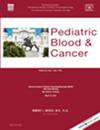Outcomes of Infant Medulloblastoma Treated With Standard-Dose Chemotherapy—A Single-Institution Experience From a Low-Middle-Income Country
Abstract
Background
Infant medulloblastoma (iMBL) is predominantly desmoplastic nodular (DN) or medulloblastoma with extensive nodularity (MBEN) histology, sonic hedgehog (SHH) driven. Intensified chemotherapy (intraventricular chemotherapy or high-dose chemotherapy with autologous stem cell rescue) is recommended to compensate for the omission of radiation. This study aims to analyze the outcomes of iMBL treated without treatment intensification.
Methods
This retrospective study was performed on 28 patients with iMBL (children with medulloblastoma <3 years at diagnosis or 3–4 years with DN/MBEN histology) treated between January 2004 and April 2024 in a tertiary care institute in southern India.
Results
The median age at diagnosis and duration of symptoms were 24.5 months and 1 month, respectively. Vomiting (82%) and ataxia (71.4%) were the common presentations. Ventriculoperitoneal shunt or endoscopic third ventriculostomy was done in 57% of patients. Twenty-four patients (∼86%) underwent gross/near-total resection. The most common surgical complication was cerebellar mutism (n = 6, 21%). Half of the cohort had nonmetastatic disease. Sixteen patients had DN/MBEN histology. Only 68% (n = 19) opted to continue postoperative treatment. Chemotherapy protocols used were baby SFOP, HIT SKK, and modified Packer. One fourth (n = 7) received radiation (DN/MBEN = 3; other histology = 4) as a part of their initial treatment. There was no treatment-related mortality. The 5-year event-free survival (EFS) of patients who received postoperative chemotherapy ± RT was 70% (those with DN/MBEN were 82.5% and non-DN/MBEN were 35.7%). The 5-year EFS of patients with DN/MBEN histology who received only chemotherapy (n = 9) was 88.9%.
Conclusions
Managing medulloblastoma in infants is challenging in LMIC, as a significant proportion of families opt against postoperative treatment. Although traditionally considered high risk, good survival can be achieved with non-intensified therapy without an increase in treatment-related mortality, especially in patients with DN/MBEN histology.


 求助内容:
求助内容: 应助结果提醒方式:
应助结果提醒方式:


